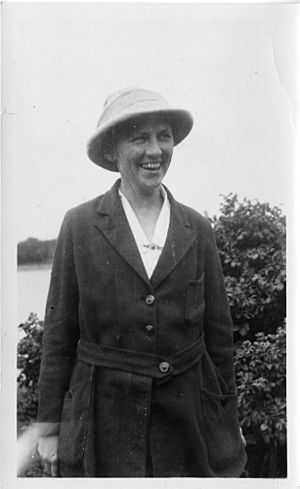Ann Haven Morgan facts for kids
Quick facts for kids
Ann Haven Morgan
|
|
|---|---|
 |
|
| Born | 6 May 1882 Waterford, Connecticut
|
| Died | 5 June 1966 (aged 84) South Hadley, Massachusetts
|
| Nationality | American |
| Scientific career | |
| Fields | Zoology |
Ann Haven Morgan (born Anna, May 6, 1882 – June 5, 1966) was an important American scientist. She was a zoologist and an ecologist. A zoologist studies animals, and an ecologist studies how living things interact with their environment.
Contents
Ann Morgan: A Life in Science
Ann Morgan was born in Waterford, Connecticut. She was one of three children. She went to Williams Memorial Institute for her early education.
Her College Years
In 1902, Ann started college at Wellesley College. Later, she moved to Cornell University. She earned her first degree, a Bachelor of Arts (B.A.), in 1906.
After graduating, she worked at Mount Holyoke College. She was an assistant and instructor in the zoology department.
Becoming a Professor
Ann Morgan continued her studies at Cornell University. She earned her Ph.D. (a high-level degree) in 1912. Her special research was about the May-fly, a type of insect.
After getting her Ph.D., she became a professor at Mount Holyoke College. She became an associate professor in 1914. By 1918, she was a full professor.
Leading the Way
From 1916 to 1947, Ann Morgan was the head of the zoology department at Mount Holyoke. She led the department until she retired.
During the summers, she also taught marine zoology. This was at the Woods Hole Marine Biological Laboratory. Marine zoology is the study of animals that live in the ocean.
Her Research and Impact
Ann Morgan's work focused on several key areas. She studied limnology, which is the study of fresh water, like lakes and rivers. She also researched how animals hibernate. Hibernation is when animals go into a deep sleep during cold months.
She was also very interested in environmental issues. She wrote three books about zoology.
Her important work was recognized by many groups. She received special research awards. These came from groups like the American Association for the Advancement of Science and the National Academy of Sciences.

